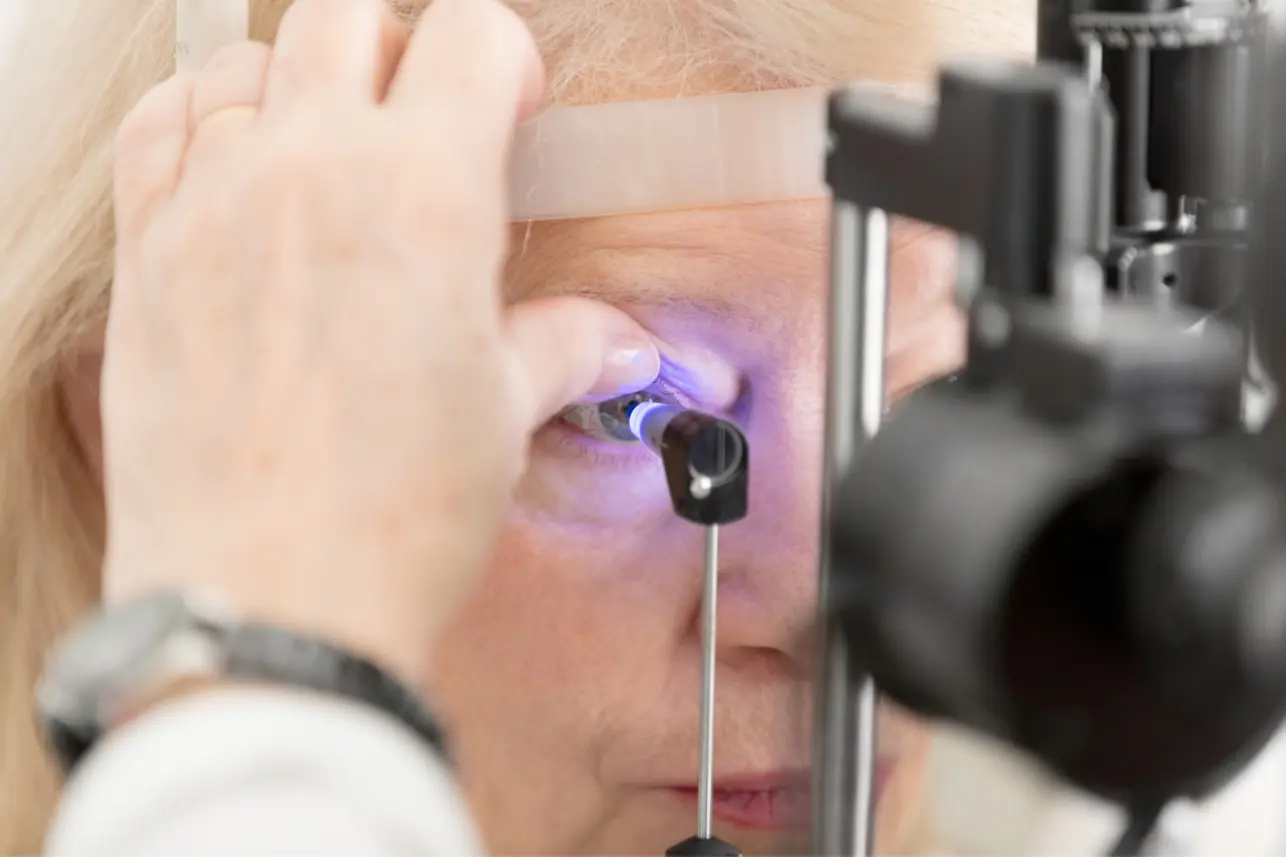Glaucoma is a leading cause of vision impairment, particularly in older adults. It often progresses without noticeable symptoms until significant damage has occurred. Although it cannot be reversed, timely detection and proper management can slow its advancement. Understanding what glaucoma is, how it is diagnosed, and the measures that can help reduce its risk can play a key role in protecting your vision.
Contents
What Is Glaucoma?
Glaucoma is a group of eye conditions that harm the optic nerve, which is critical for transmitting information from your eye to your brain. The damage often results from elevated pressure inside the eye, medically termed intraocular pressure. Glaucoma has several types, with open-angle being the most common. This form develops gradually over time, unlike acute angle-closure, which can appear suddenly with noticeable symptoms.
The condition can progress to irreversible vision loss if left untreated. Other forms, such as normal-tension glaucoma, occur even when eye pressure is within typical ranges. Since symptoms often develop subtly or go unnoticed, regular monitoring of eye health becomes significant. This can be more influential for individuals over 40 or those with a family history of the condition.
How Is Glaucoma Diagnosed?
Diagnosing glaucoma involves multiple assessments that examine the overall health of your eyes and optic nerves. Eye care professionals typically start with measuring intraocular pressure using a device called a tonometer. Higher-than-average eye pressure can signal a higher likelihood of glaucoma, prompting further investigation.
Another method commonly used is a dilated eye exam, where the pupils are enlarged with eye drops to allow a closer inspection of the optic nerve. Visual field testing may also be performed to assess peripheral vision since loss in this area can be an early sign of the disease. Additional imaging techniques, such as optical coherence tomography, may be used to capture detailed, cross-sectional images of the retina and optic nerve.
How Is Glaucoma Treated?
Treatment for glaucoma focuses on reducing intraocular pressure to slow the progression of the disease. Eye drops are often the first line of therapy. These may work by decreasing the amount of fluid produced in the eye or improving its drainage. If medications are not sufficient to control eye pressure, additional treatments may be suggested. These may include laser therapy or surgical procedures.
Strategies to Help Lower Your Risk of Glaucoma
While it is not always possible to prevent glaucoma, some measures may help reduce the risk of developing the condition:
- Regular comprehensive eye exams, particularly for adults age 40 and older.
- Maintaining a healthy lifestyle with regular physical activity has been associated with lower eye pressure.
- Consuming a balanced diet rich in antioxidants may provide additional benefits.
- Wearing protective eyewear during activities that risk eye injury.
- Regular monitoring and open communication for those with a higher risk of glaucoma or family history.
Schedule Your Eye Exam Today
Early detection can make a difference in managing glaucoma and protecting your vision. Regular visits to an eye care professional are a proactive way to monitor for changes and address potential issues before they escalate. Reach out to your local optometrist or ophthalmologist to schedule a comprehensive eye exam.

Sarah Wilson, an accomplished writer and seasoned blogger, weaves compelling narratives that transport readers to new and uncharted worlds. With a talent for vivid storytelling and thoughtful insight, her work leaves a lasting mark, enchanting both the imagination and intellect.
